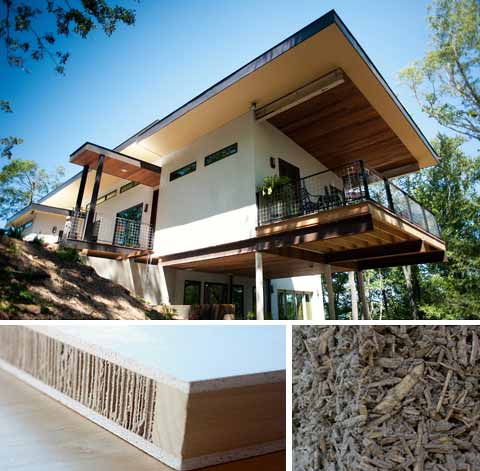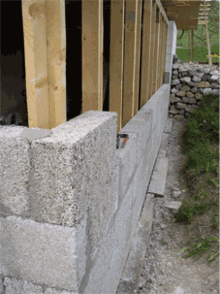Talking Hemp Fashion with Jungmaven
Hemp fiber has been woven into fabrics since 8000 BC, according to archaeologists. American history shows Betsy Ross, the original White House First Lady, stitching the stars and stripes into a flag made from Hemp fabric. At that time, colonial laws required that farmers grow Hemp. Hemp fabric was used for clothing the military. Until prohibition, everyone wore something made of Hemp!
Since the Marijuana Tax Act of 1937 was enacted, activists, politicians and business owners have attempted to separate Hemp from its cousin plant, marijuana, so that American farmers could grow Hemp and Factories could produce products made from Hemp.
Hemp is considered one of the most durable fabrics known to man. It is resistant to mold and mildews, holds up over long periods of time and maintains its style.
Many industrialized nations are currently enjoying the economic and environmental benefits of growing Hemp and manufacturing products from the Hemp plant. Through those concerted efforts of entrepreneurs, politicians, lobbyists, investors and activists, Hemp fabrics are now able to be imported into the United States and fashion designers have been able to create many new clothing and accessory lines.
Hemp Fashion with Jungmaven
SB: How long have you been working with Hemp Fabrics?
RJ: There are pivotal moments in life that change you forever. Being introduced to industrial Hemp in 1992 is one of those for me. I began working with Hemp while in Seattle. American Hemp Mercantile had just opened up in Pioneer Square. They loaned me a bolt of 100% canvas and I made a simple rope wallet called the “Chenga”. The wallets started selling and someone from MTV ordered 1,000 for MTV Spring Break. I had to scramble and find a factory. Chenga was my first brand, all-in-all I started. Since then I have designed or have been involved with six Hemp clothing brands: Chenga, Manastash, Two Jupiters, Phatee, Cobano and now Jungmaven.
SB: Why did you choose Hemp as a base for your business?
RJ: I moved from Phoenix, AZ to Seattle my freshmen year in high school. My family’s love of hiking, got me into mountain biking, camping/hiking, rock climbing while at Central Washington University. Over the years you couldn’t help but notice there were less trees around. Washington State was being clear-cut to death and I was enthralled by trees. Companies like Weyerhaeuser would later apologize for being too aggressive with deforestation. An environmental professor at CWU one day during class said, “America could stop clear-cutting by growing industrial hemp for wood, paper supplies, fuel and food.” It was a like a light bulb went off! I knew exactly what I was going to do! I began making hemp rock-climbing chalk bags, hydration packs for mountain biking and clothing out of Hemp. Friends asked for products and so a Hemp clothing company was born.
SB: You have a manufacturing plant in Los Angeles, but have to import the hemp materials from other countries. How has this affected your business?
RJ: We sub-contract out with factories in the USA to build Jungmaven products. Everything Jungmaven is American Made. It’s a billion dollar a year industry and quickly growing. American Farmers are missing out on it. Subsequently, they are the ones who have to demand to grow hemp to make Industrial Hemp legal in America again. As far as affecting my business.. I don’t think it has affected our business at all, we buy from the market that is already in place. It is what it is. It’s just a shame that industrial hemp, an American natural resource that once was required by law to grow in Virginia is illegal grow today.
SB: A lot of your clothing is a blend of Hemp and other materials. What are some of your favorite blends and why?
RJ: love the hemp/wool blends, but I like 100% hemp the best. I am coming out with a 100% hemp t-shirt, Spring 2013.
SB: Since you began your Hemp clothing business, many aspects of Hemp fashion have changed. What are some of the changes for the better?
RJ: Hemp has become more main stream and that’s exactly what we all have been working toward. I’ve always gone after the outdoors market building products that last and work for a long time. The Outdoor Market is “IN” fashion right now and that plays well for these tough Hemp clothing lines. During down economies people are looking for something that will hold up over time, looks good and does not go out of style. Hemp products can be exactly that.
SB: You have moved to New York City this past year to be closer to the fashion industry this past year, why?
RJ: I work within a showroom in NYC that is helping us bring Hemp products to a broader market. We sell to fashion boutiques, outdoor shops, high-end lifestyle stores in an effort to introduce hemp shirts as a basic T. It’s just a shirt, but, it’s a shirt that is made of hemp and if more people wear it more hemp will be grown.
SB: What is new and up and coming in the World of Hemp fashion?
RJ: The new Jungmaven Henley is coming out this Fall/Winter. There are many new blended fabrics coming out these days that’s giving designers more opportunity.
SB: What advice would you give to new businesses breaking into Hemp fashion?
RJ: Be passionate about what you do. Make phone calls and visit the customers in person. One-on-one is crucial. Get to know the buyers and people who are selling your products on the floor, listen to them and what they are hearing from the customers buying your products. Do trade shows and get involved in the industry you choose. Look outside the box, there is opportunity in everything that is happening in the world, it’s fun looking for it and helping it evolve.
SB: Obviously, we need to repeal cannabis prohibition laws. How would this positively affect your business?
RJ: When I hear Cannabis I hear marijuana, I think of the smoking, medical and the recreational drugs associated with marijuana. When I hear Industrial Hemp I hear fuel, fiber and food and not marijuana. One has to be clear with defining these two if they want to see change happen in either industry. The two are a completely different subjects and plants and must be separated.
Jungmaven Products can be found online at www.jungmaven.com
This article was originally posted on www.hemp.com and can be found here.







